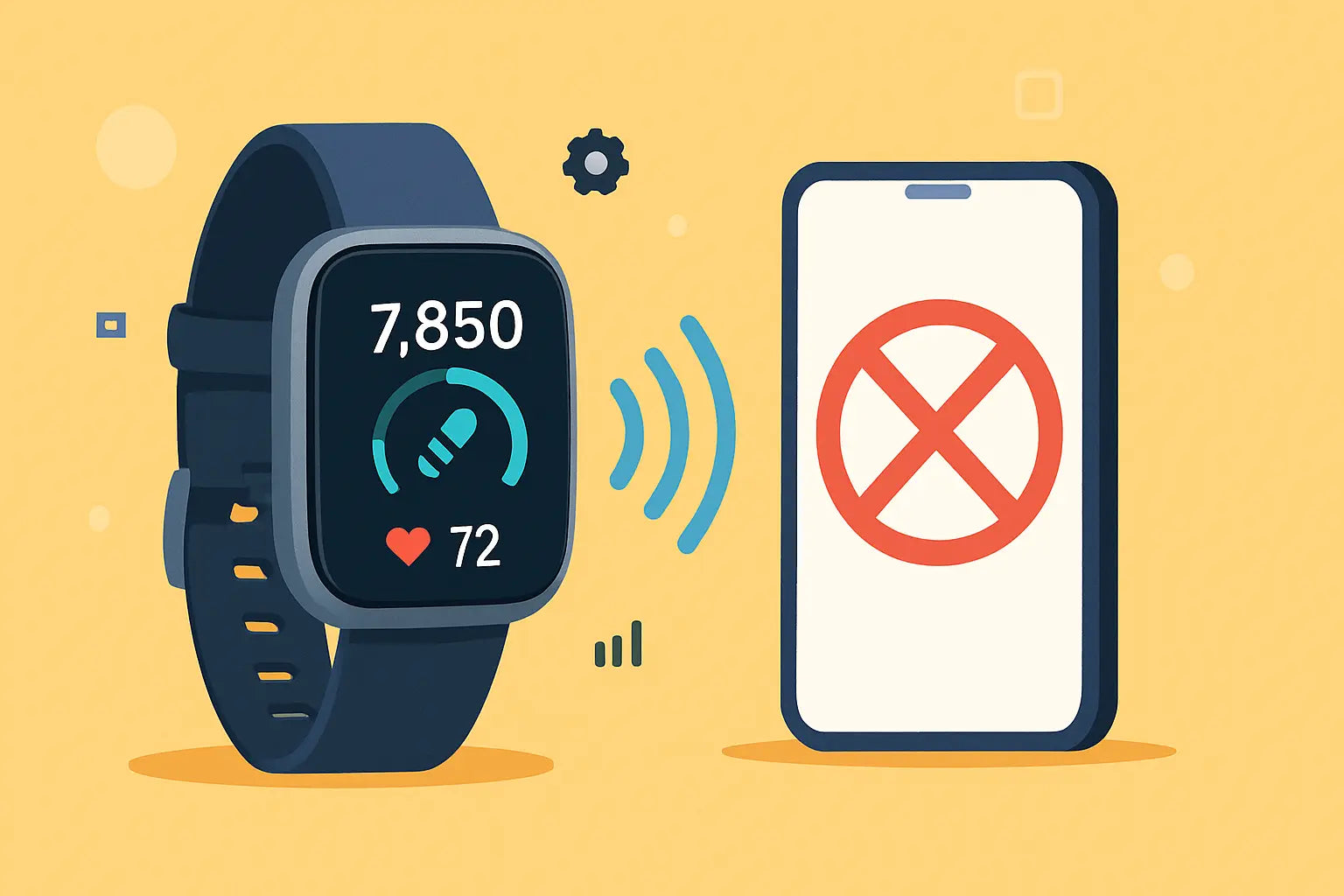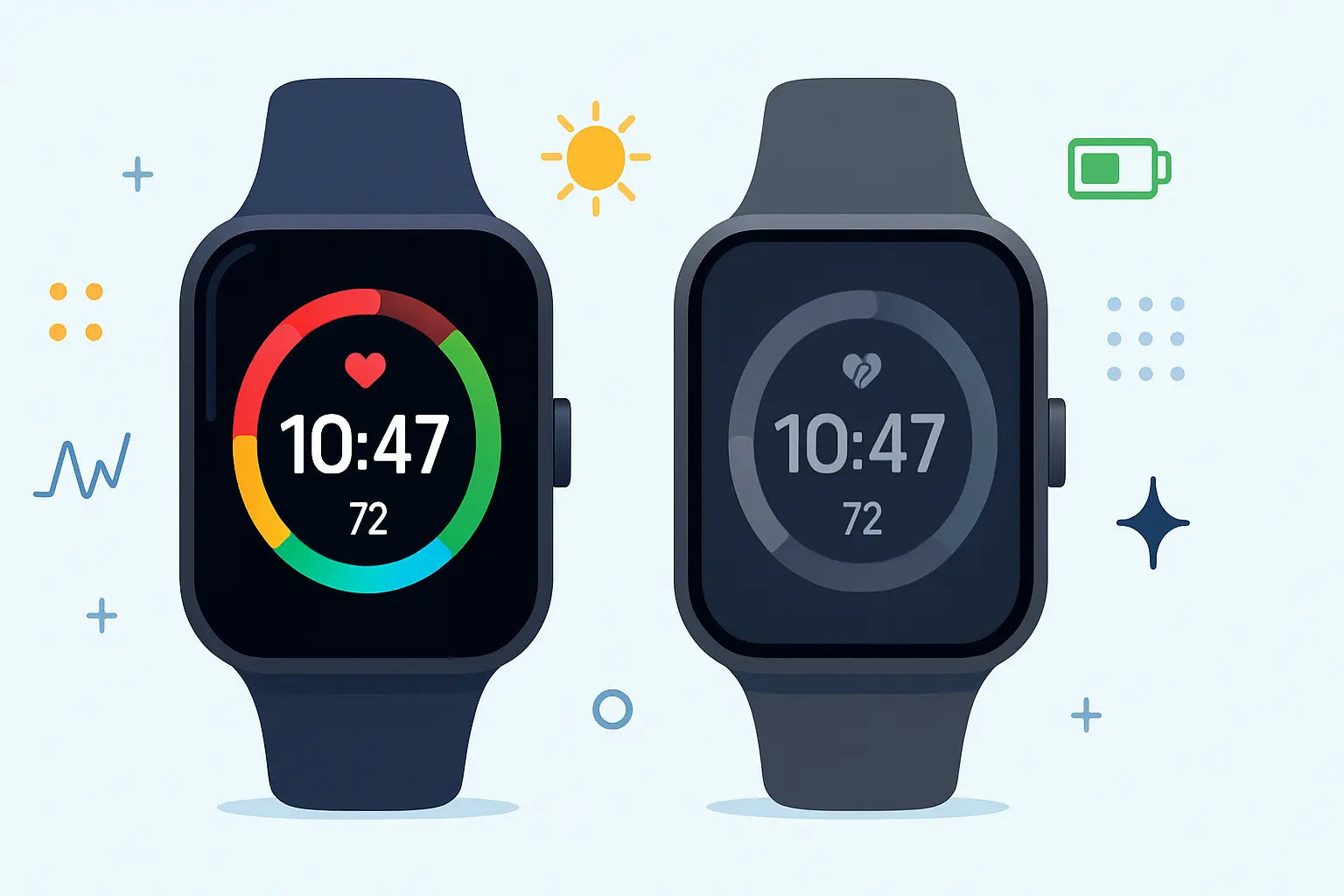Apple Watch 11 tracks sleep by combining motion and heart signals with machine learning to estimate stages and duration, presenting trends in the Sleep app and Health on iPhone. It detects when you fall asleep, wake, REM, core, and deep sleep, plus respiratory rate and wrist temperature changes.
The building blocks of Apple Watch sleep tracking
Sleep tracking on Apple Watch 11 relies on three pillars: sensors, software models, and your Sleep Schedule. Sensors capture raw signals overnight, and machine learning maps those signals to sleep stages. A Sleep Focus minimises interruptions and aligns measurement windows.
Sensors on Apple Watch 11
The optical heart sensor reads pulse waves to derive heart rate and heart rate variability. A 3-axis accelerometer detects micro-movements, stillness, and sleep posture changes. The temperature sensor captures nightly wrist temperature variation for longer-term trends.
Algorithms and sleep stages
watchOS analyses 30-second epochs, blending motion, heart rate dynamics, and circadian context. It assigns probabilities for Awake, REM, Core, and Deep, then smooths transitions to reflect realistic sleep architecture. The result is a stage graph and summary totals you can review each morning.
What Apple Watch measures overnight
The watch captures several complementary metrics that help explain how you slept. These give both a snapshot of last night and longer trends across weeks. The table below summarises the essentials.
| Signal | Sensor in Watch | Typical cadence | What it reveals | Example output |
|---|---|---|---|---|
| Motion | 3-axis accelerometer | Continuous, low-power | Stillness, turns, awakenings | Restless 12 minutes |
| Heart rate | Optical heart sensor | Every few seconds | Sleep depth, arousals | Average 56 bpm |
| HRV | Derived from pulse | Aggregated nightly | Autonomic balance | RMSSD 38 ms |
| Respiratory rate | Pulse waveform analysis | Per minute | Breaths per minute | 13 brpm |
| Temperature variation | Wrist temp sensor | Nightly delta | Long-term trends | +0.2 C change |
| Stage classification | ML on-device | 30-second epochs | REM, Core, Deep | REM 22 percent |
How accurate is sleep tracking on Apple Watch?
For total sleep time, studies on wrist wearables typically show high agreement with lab polysomnography, often around 85 to 95 percent. Staging is inherently harder: consumer devices commonly reach around 65 to 80 percent agreement for REM and Deep, with Awake detection strongest. Apple Watch 11 aligns with these ranges in real-world use.
Accuracy improves with snug fit and consistent schedules. You can expect REM to cluster near 20 to 25 percent of sleep and Deep near 13 to 23 percent in healthy adults, with nightly variability. Short naps are detected, but staging is most reliable across full-night windows.
How do I view sleep data on Apple Watch?
On your wrist, open the Sleep app after waking to see total time asleep, time in stages, and a 24-hour chart. Turn the Digital Crown to scroll through metrics like respiratory rate and heart rate. Tap a day to detail stages by timeline.
- Open Sleep app
- Scroll with Crown
- Tap for details
In the Health app on iPhone
Open Health, tap Browse, then Sleep to see trends across weeks and months. Toggle Show More Sleep Data to view time in bed, stages, respiratory rate, heart rate, and wrist temperature variation. Use Add to Favourites to pin key metrics to the Summary tab.
Setting up sleep tracking on Apple Watch 11
On iPhone, open Health, set a Sleep Schedule, and enable Sleep Focus to start automatically at bedtime. On the watch, confirm Sleep Focus mirrors your iPhone and turn on Track Sleep with Apple Watch. Choose Wind Down shortcuts to dim the screen and reduce notifications.
- Create Sleep Schedule
- Enable Sleep Focus
- Turn on Track Sleep
Battery life and charging strategy
Apple Watch models targeting all-day use typically deliver around 18 hours per charge, depending on settings and usage. Overnight sleep tracking usually consumes 10 to 15 percent battery over 7 to 8 hours. A 30-minute top-up before bed or after waking keeps you within a comfortable daily cycle.
Tips for UK routines
Charge while showering or during breakfast to avoid missing closing rings later. Low Power Mode can reduce drain if you have a late night. Keep the display off during Sleep Focus to minimise unintended wakeups.
Improving sleep tracking accuracy
Wearing and fit
Wear the watch above the wrist bone with a snug but comfortable fit to maintain good optical contact. A strap that keeps the sensor steady will reduce dropout and false awakenings. Consider breathable materials to avoid loosening overnight.
Swap bands seasonally to stay comfortable and consistent. For secure comfort and style, explore Apple Watch straps that hold the watch reliably during sleep. Better fit equals cleaner signals and clearer staging.
Environment and habits
Keep the bedroom cool, quiet, and dark to reduce arousals that complicate classification. Avoid caffeine and alcohol late, as both can suppress deep sleep and fragment REM. Maintain a regular bedtime to help the model align circadian context with signals.
Third-party apps that add depth
Apps like AutoSleep, Pillow, and NapBot can visualise additional trends or readiness scores. They use the same underlying Health data, so accuracy is bound by sensor quality and fit. Try a few and keep the one that reflects how you feel each morning.
Interpreting your nightly results
Focus first on consistency of total sleep time across the week, targeting the NHS-recommended 7 to 9 hours for adults. Track Deep and REM as supportive metrics rather than goals, because your body self-adjusts night to night. Look for trends, not perfection, across 14 to 28 days.
What stage percentages mean
REM often rises toward morning and supports memory consolidation. Deep sleep concentrates in the first third of the night and aids physical recovery. Core sleep is the light stage that bridges transitions and should be the largest portion.
Privacy and data handling
Sleep data is encrypted on-device, and if you use iCloud with two-factor authentication, Health data syncing is end-to-end encrypted. You can control which apps read or write Sleep in Health permissions. Deleting Sleep data from Health removes it from iCloud when applicable.
Limitations to keep in mind
Apple Watch 11 is a wellness device and does not diagnose sleep disorders. Respiratory rate and blood oxygen trends are informative but not medical measurements. If you suspect sleep apnoea, consult your GP for clinical testing.
Accessories that help you sleep better
A lightweight, breathable band can reduce heat and movement at night. Soft loop or stretch bands are popular for comfort during sleep. Pair with a low-profile charger and nightstand to simplify your routine, and see curated Apple Watch accessories for the bedside.
Frequently asked questions
Does Apple Watch 11 detect naps?
Short daytime sleep can be detected if Track Sleep is on, though staging may be limited for very brief naps. You will see time asleep added to your daily total. For best results, keep naps over 20 minutes.
Can I wear it loosely to sleep?
A loose fit reduces optical signal quality and can lower accuracy. Aim for a snug, comfortable fit that does not slide on the wrist. Adjust the strap before bed and recheck after 10 minutes.
How much battery do I need at bedtime?
Going to bed with at least 30 percent is usually sufficient for one night. If you use Low Power Mode, you can manage with slightly less. Top up in the morning to 80 to 100 percent for the day.
Why do stages differ from my feelings?
Perception after waking often underestimates total sleep time. Staging is probabilistic and may miss brief awakenings or misclassify transitions. Trust multi-day trends more than single nights.
Will wearing on the other wrist matter?
Either wrist works, provided the fit is stable. Keep it on the same wrist consistently to reduce variability. Update your watch fit and strap tension if you switch sides.
Conclusion
Apple Watch 11 tracks sleep by fusing accelerometer motion, optical heart signals, respiratory rate, and temperature variation, then applying on-device models to classify Awake, REM, Core, and Deep stages. You view results in the Sleep app and Health, with best accuracy from a snug fit and consistent schedule. That is how sleep tracking works on the Apple Watch.




Leave a comment
All comments are moderated before being published.
This site is protected by hCaptcha and the hCaptcha Privacy Policy and Terms of Service apply.